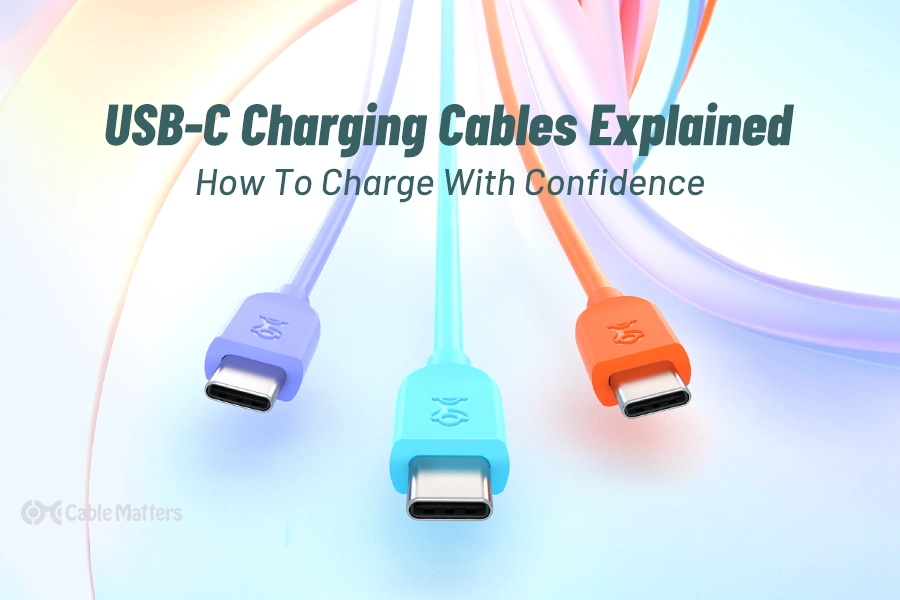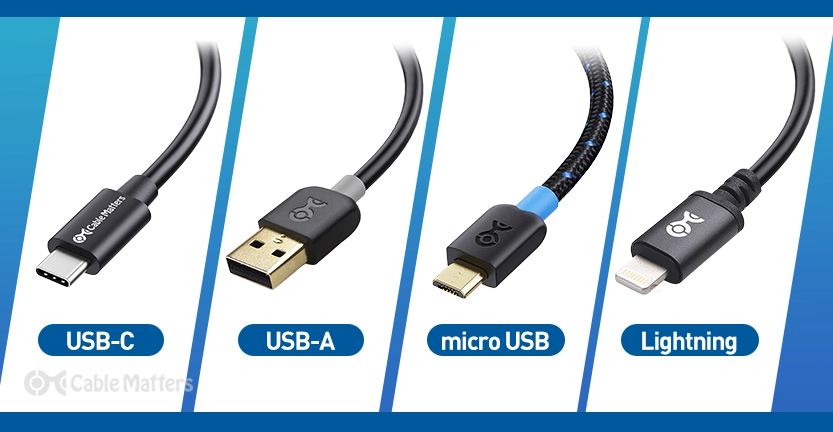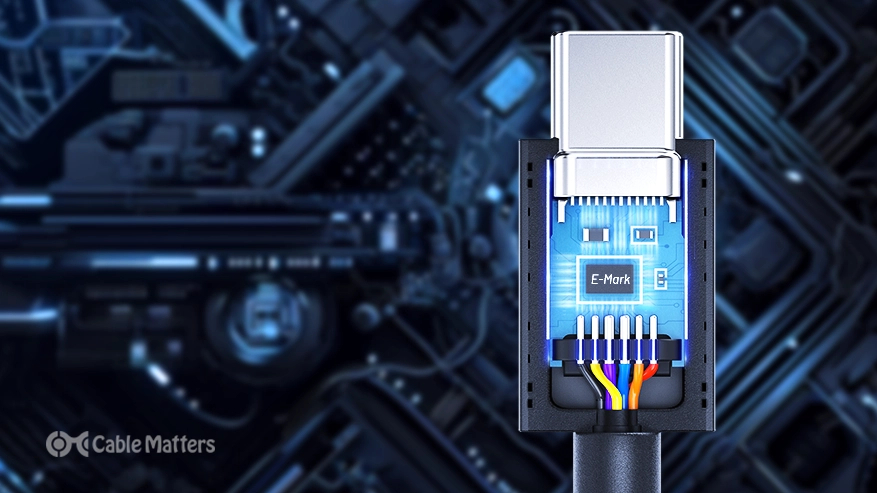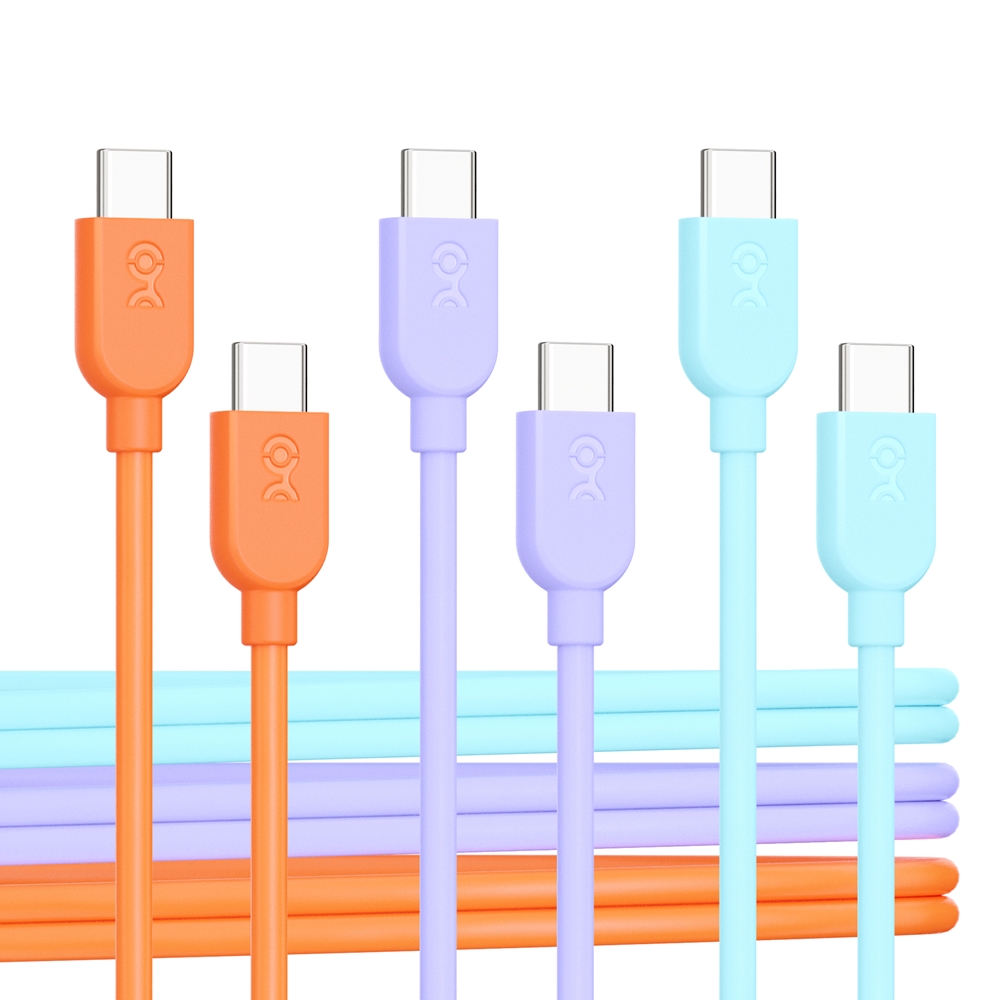
Navigation
In today's fast-paced digital world, the significance of USB-C charging cables cannot be overstated. With the recent release of the cutting-edge iPhone 15, Apple has embraced USB-C as the standard charging port for all its devices, underscoring the importance of this technology. This shift highlights the need for high-quality, reliable USB-C charging cable options to ensure seamless charging experiences.
USB-C cables offer notable advantages over their predecessors. They provide faster charging and offer enhanced compatibility, enabling you to power up all your devices quickly, be it an Android phone, a MacBook, or any other device with USB-C support.
However, amidst the growing demand for USB-C cables, choosing high-quality options becomes paramount. Opting for inferior cables can result in slower charging speeds, compatibility issues, and potential device damage. To charge with confidence, selecting reputable brands offering durable, high-speed, and reliable USB-C cables is essential. But how do you know which cables are the best?
In this article, we will guide you in finding the perfect USB-C cable for your devices. We will explore the benefits of USB-C technology and help you understand key factors to consider when making your selection. By the end, you will possess the knowledge necessary to make informed decisions and optimize your charging experience. Whether you're an iPhone 15 user or an Android enthusiast, get ready to unlock the full potential of USB-C technology and charge with confidence.
What Are USB-C Charging Cables?
USB-C charging cables represent a significant milestone in the evolution of connectivity solutions. Developed by the group of companies that make up the USB Implementers Forum (USB-IF), these cables were introduced to the market around 2014. USB-C, also known as USB Type-C, was designed to become the universal method of connection and power delivery, replacing the assortment of USB-A, micro USB, and other types of cables that were prevalent at the time.

The USB-C connector is small, just about the size of a micro-USB connector, but notably more robust and powerful. The revolutionary design critically discards the concept of directionality. This means the cable is reversible and can be plugged in either way, eliminating the hassle of figuring out the right side for plugging in. This user-centric design marked a significant improvement in user experience from its predecessors.
But USB-C's real breakthrough lies in its capability of power delivery and speed of data transfer. Standard USB cables could only handle a limited amount of power, which made them fine for smaller devices such as smartphones or tablets but unsuitable for larger devices like laptops. USB-C, on the other hand, can carry far higher power, up to 240W, making it possible to charge more substantial devices quickly. Moreover, with data transfer speeds up to 40Gbps with USB4, it is over 80 times faster than the traditional 480Mbps of USB 2.0.
The impact of USB-C in the realm of connectivity has been transformative. It has streamlined and revolutionized the way we charge our devices and transfer data. You can now use the same cable to charge a laptop, transfer data swiftly between devices, connect to an external display, or even use it as an audio cable. This has significant implications in creating more universal and standardized charging and connectivity solutions across numerous devices—regardless of the brand.
USB-C represents a technological leap that has enhanced convenience, efficiency, and versatility in the world of connectivity. As we move towards a more connected future, USB-C charging cables continue to play an integral role, embodying the concept of 'one cable for all', creating a world less cluttered and more connected.
How Do USB-C Charging Cables Work?
USB-C charging cables stand on the cutting edge of device power delivery, and the star behind this powerhouse technology is an advanced feature known as USB Power Delivery (USB PD). The electronic marker (E-mark) chipset, embedded within the plug of the USB-C cable, adds an intelligent layer of choreography to charging.

Let's dive in and examine how this works.
All USB-C cables must be able to carry a minimum of 3A current (at 5V, for 15W), but some can carry 5A current (at 20V, for 100W and 48V, for 240W). USB-C to USB-C cables supporting 5A current must contain an E-mark chip programmed to identify the connected devices and their current capabilities. The E-mark chipset optimizes power delivery by enhancing the communication between the charger and the device being charged. The implementation of the E-mark chipset has enabled USB PD (Power Delivery) to operate efficiently by utilizing a dynamic power negotiation protocol. This protocol allows for the seamless negotiation of power requirements between the connected devices, ensuring that the most optimal power delivery is achieved. The E-mark chipset installed within the USB-C cable is fundamental to this dynamic handshake. Acting as a negotiator of sorts, the E-mark chipset communicates the cable's specifics, including power-handling capabilities and certification status, playing an instrumental role in actualizing efficient device charging.
As a result, users can experience faster charging times, improved battery life, enhanced safety, and greater overall convenience.
USB Power Delivery (USB PD) 3.1 Extended Power Range (EPR) is a notable update to the USB PD specs that allows the most advanced USB-C charging cables to support elevated power delivery. While previously the power delivery was capped at 100W, with the advent of EPR, this cap has been significantly extended up to a maximum of 240W. This increased capacity is made possible through the use of higher voltage levels such as 28V, 36V, and 48V at 5A.
The incorporation of EPR is a noteworthy advancement in technology because it supports more efficient charging and powering of power-intensive devices, like laptops, which require more power for rapid charging. A span of fixed voltages extends up to 48 volts, while its adjustable voltage mode caters to the device's exact voltage requirements – from 15V to 48V, at a resolution of 100mV. This degree of precision empowers USB PD 3.1 to service each device's unique power needs, furthering precision, and adaptability in the charging process.
While focusing on power delivery enhancements, USB PD 3.1 also pays deliberate attention to safety. Detailed safety protocols for each power range are strictly adhered to, ensuring that the user can leverage the cable's enhanced power capabilities with confidence.
Benefits of USB-C Charging Cables
USB-C charging cables offer a host of benefits that make them an excellent choice for charging a wide range of devices. These cables, characterized by their small, reversible, oval-shaped connectors, have gained significant popularity in recent years. Their growing adoption can be attributed to several advantages they offer over traditional charging cables.
One of the primary benefits of USB-C charging cables is their versatility. USB-C is a universal standard that can be found on a wide range of devices, including smartphones, tablets, laptops, and even some gaming consoles. This means that a single USB-C cable can be used to charge multiple devices, eliminating the need for separate cables for each device. Moreover, USB-C cables support Power Delivery (PD), allowing for higher power transfer and enabling faster charging times.
Another advantage of USB-C charging cables is their faster charging speeds. With Power Delivery capabilities, USB-C cables can deliver significantly more power compared to standard USB cables. This translates to shorter charging times and the ability to quickly top up your devices, even power-hungry ones like laptops and tablets. Additionally, USB-C cables can support bidirectional charging, enabling devices to both receive and provide power. This feature is particularly useful for devices that support "power sharing," allowing them to charge other devices through USB-C connections.
USB-C charging cables also offer improved efficiency and convenience. The cables are reversible, meaning they can be inserted into a port without worrying about their orientation. This eliminates fumbling around trying to plug them in the right way, ultimately saving time and frustration. Additionally, USB-C charging cables can support faster data transfer speeds, making them ideal for syncing files and transferring large amounts of data between devices while charging them at the same time.
Furthermore, high-quality USB-C cables are designed to be more durable. They feature robust connectors and thicker, more resilient cables that can withstand daily wear and tear. Additionally, some manufacturers incorporate additional features like strain relief and reinforced connectors to further enhance the durability of the cables.
USB-C charging cables offer a range of benefits that make them superior to traditional charging cables. From their versatility to faster charging speeds, improved efficiency, and enhanced durability, USB-C cables provide a seamless charging experience for a variety of devices. With their universality and ability to accommodate higher power loads, USB-C cables are undoubtedly paving the way for the future of device charging.

Factors to Consider When Choosing USB-C Cables
When it comes to choosing USB-C cables, there are several critical factors to consider. USB-C technology has revolutionized the way we charge our devices, offering faster charging speeds, increased versatility, and improved convenience. However, not all USB-C cables are created equal, and selecting the right cable is essential for optimal performance and compatibility with your devices. Here are some key factors to keep in mind when choosing USB-C cables:
PD Capability: USB-C cables that support Power Delivery (PD) can deliver higher power levels, up to 240W, enabling faster charging for compatible devices. Make sure the cable you choose is labeled as "USB-C PD" or supports the desired power output for your device.
Charging Speed: Different USB-C cables support varying charging speeds. Higher-quality cables often have better conductive materials and thicker copper wires, allowing for faster and more efficient charging. It is essential to look for cables that align with the wattage (W) requirements of your devices
Cable Length: Consider your charging needs and the distance between the power source and your device. USB-C cables come in various lengths, ranging from one to ten feet or more. Longer cables offer more flexibility but bear in mind that longer cables may result in slower charging speeds due to power loss over distance.
Data Transfer Speed: USB-C cables can also be used for data transfer between devices. If you intend to transfer files or sync data at high speeds, choose a cable with a higher data transfer rate, such as 10Gbps (USB 3.1 Gen 2) or 40Gbps (USB4).
Connector Quality: Check the quality of the connectors on the USB-C cable. Look for cables with sturdy, well-built connectors that fit securely into devices without wobbling. Reinforced connectors and strain relief can also enhance durability and prevent breakage, especially if the cable is subject to frequent bending or twisting.
Certification: USB-IF (USB Implementers Forum) or Intel certification ensures that a USB-C cable meets specific standards for quality and performance. Look for cables that are USB-IF certified to ensure compatibility and reliability. Intel's Thunderbolt certification process also guarantees an optimal experience.
Price: While price shouldn't be the sole determining factor, it's worth considering the overall value and quality of the USB-C cable. Cheaper cables may be more prone to failure or may not meet the required specifications for your devices.
By considering these factors, you can select USB-C cables that best suit your charging and data transfer needs, ensuring optimal performance and compatibility with your devices. USB-C technology continues to evolve, and staying informed about the latest standards and specifications can help future-proof your investment in USB-C cables. Choose wisely, and embrace the convenience and versatility that USB-C cables offer.
Conclusion
As we look towards a future of enhanced connectivity and power delivery, the significance of USB-C technology continues to climb. Bear in mind the importance of choosing a high-quality and reliable USB-C cable to truly reap the benefits of this cutting-edge technology, whether that be faster charging speeds, widespread compatibility, or solid design that withstands the test of time.
Indeed, the shift towards USB-C represents a key significant milestone in our technical timeline. This universal standard streamlines our interactions with numerous digital devices – smartphones, laptops, and other USB-C-supported devices – reinforcing an increasingly seamless digital ecosystem.
USB-C cables, when backed by smart features such as the E-mark chipset and the extended power range (EPR) of USB PD 3.1, offer a blend of power, speed, and efficiency seldom seen in its predecessors. As consumers, it behooves us to understand the critical factors to consider when choosing a USB-C cable, such as PD capability, charging and data transfer speeds, cable length, connector quality, certification, and overall value.
The future of device charging and connectivity appears brighter with each technological advance. USB-C leads that charge, simplifying our digital lives and promising a universal solution to device charging. Herein lies the exciting potential of USB-C – a one-cable solution for a world less cluttered yet more connected. Stay informed, choose wisely, and embrace the immense possibilities that this transformative technology brings to the fore. The future is here, and it charges via USB-C.
Frequently Asked Questions
Which USB-C Cable is best for charging?
The best USB-C cable for charging depends on your specific needs, but generally, cables that support USB Power Delivery (USB PD) and have a high wattage (W) specification offer faster charging speeds. Examples include the Cable Matters USB-C 2.0 Charging Cable with 100W Power Delivery and the Cable Matters USB Type-C to USB Type-C 2.0 Charger Cable.
Are cheap USB-C cables safe?
Not always. While USB-C cables may be cheaper, they can carry the risk of potential device damage if they don’t meet specific standards for quality and performance. Always check for USB-IF certification to ensure compatibility and reliability.
What are the 3 types of phone chargers?
The three main types of phone chargers are USB-A, Micro-USB, and USB-C. USB-C chargers are the newest and provide faster charging and data transfer rates than previous connectors.
Why do USB-C cables go bad?
USB-C cables can go bad due to numerous factors including daily wear and tear, poor build quality, or internal damage to the wires. They can also degrade if they're frequently bent or twisted beyond their stress limits, or if they're exposed to extreme temperatures.